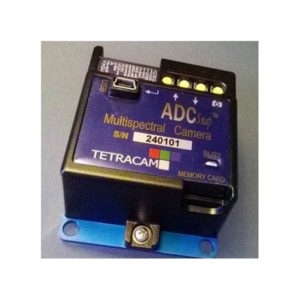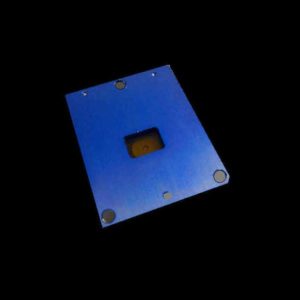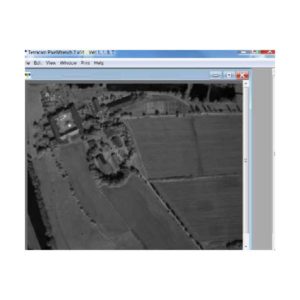Tetracam’s Ultra-Fast 90 Gram Multi-spectral Imaging System with an Electronic Global Snap Shutter.
Overview
The ADC Snap and its accompanying software, PixelWrench2, are ideally suited for high-speed capture of multi-spectral images of crops, forests and other eco-systems.
Featuring 16 GB standard storage, fast parallel processing, ultra-low power consumption, and simple menu-organized configuration and control, the ADC Snap captures visible light wavelengths longer than 520 nm and near-infrared wavelengths up to 920 nm.
The ADC Snap’s exposure time is so fast that engineers in our labs use this camera to capture stop-action photos of fan blades on their desks. These stop action cameras operate at speeds comparable to industrial machine vision cameras.
Three filters atop the sensor limit the radiation that enters it to bands of green, red and near-infrared radiation equivalent to Landsat Thematic Mapper bands TM2, TM3 and TM4. These bands are the basis for the standard “false color” composite images that have become associated with multi-spectral imagery. They provide excellent early warning signs of plant stress and their use as indicators of other specific plant and soil conditions has been documented by scientists for decades.
The ADC Snap is housed in the same package as the ADC Micro. It has the same weight, power consumption and interface connections as the ADC Micro.
Sensors and Filters
The ADC Snap’s principal difference from the ADC Micro is that it uses a 1.3 MPel electronic global snap sensor that creates images consisting of 1280 x 1024 pixels.
Rather than using a ‘Rolling Shutter” sensor like ADC Micro systems than scan each image from top to bottom, Micro-MCA Snap system sensors expose the entire image at the same instant in time. This allows ADC Snap images to be captured free of motion blur and other distortions. The ADC Snap camera is ideal for use with fast or low-flying UAVs, especially fixed wing aircraft susceptible to pitch, roll or yawing problems.
Image Memory
The ADC Snap’s 16 GB micro SD memory card is easily accessible by the user. Images are stored along with metadata such as GPS coordinates and/or attitude information (pitch, roll and yaw) that is sent to the system through the ADC Snap’s serial interface (see I/O connections described below). Metadata helps users establish the ground location of each image. After missions are completed, users remove the Micro SD memory from the camera and transfer its contents to a host computer equipped with PixelWrench2, the software included with all Tetracam systems.
PixelWrench2
PixelWrench2 provides color processing of Tetracam RAW and DCM files, complex batch processing tools, a comprehensive suite of image editing tools and the ability to extract various vegetation indices such as NDVI from the captured images.
In addition to indicating plant stress, vegetation indices such as NDVI enable users to deduce information such as biomass, chlorophyll concentration in leaves, plant productivity and fractional vegetation cover as well as predict crop yield.


